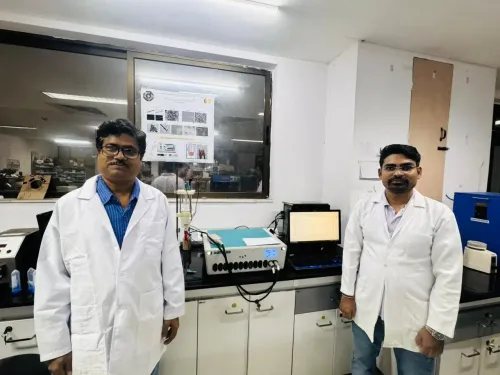How Did Indian Researchers Decode the Early Lives of Young Stars Using NASA Satellite Data?

Synopsis
Key Takeaways
- YSOs are in the earliest stages of stellar evolution.
- The study identified six categories of YSO variability.
- Infrared light reveals hidden details of star formation.
- Stellar infancy is more dynamic than once thought.
- Research highlights India's contribution to astrophysics.
New Delhi, Nov 26 (NationPress) A group of scientists from the Aryabhatta Research Institute of Observational Sciences (ARIES) has successfully analyzed the early phases of young stars, known as Young Stellar Objects (YSO), leveraging a decade's worth of data from NASA's Wide-field Infrared Survey Explorer (WISE) and its extended mission NEOWISE, as announced by the Ministry of Science & Technology on Wednesday.
ARIES operates autonomously under the Department of Science & Technology (DST).
The findings, published in The Astrophysical Journal Supplement Series, indicate that the infancy of stars is much more chaotic and variable than previously anticipated.
YSO are stars at their nascent stages, during which they stably fuse hydrogen in their cores. This phase precedes their entry into the main sequence represented on the Hertzsprung-Russell diagram, a graphical representation of stars in different stages of development based on temperature and luminosity.
In their research, Neha Sharma and Saurabh Sharma from ARIES examined light curves for over 22,000 YSOs located in various massive star-forming regions within our galaxy. These regions act as natural laboratories for studying the birth and evolution of stars.
By analyzing over ten years of infrared observations from WISE/NEOWISE at 3.4 and 4.6 microns, they categorized YSO variability into six distinct types: linear (consistent brightening or dimming), curved (nonlinear trends), periodic (repeating patterns related to rotation or disk orbit), burst (sudden brightening), drop (sudden dimming), and irregular (erratic, chaotic changes).
The team discovered that as dense molecular clouds collapse under their own gravity, a protostar forms at the center—a hot, dense core surrounded by a rotating disk of material. The light emitted by the protostar originates from the heat generated by gravitational collapse and mass accretion rather than fusion,” stated the Ministry.
Over time, material from the surrounding disk continues to accumulate onto the protostar, fueling its growth. This process is inherently unstable, leading to sudden bursts and lulls in accretion, which can result in rapid and unpredictable changes in brightness.
Eventually, the radiation pressure from the burgeoning star can expel the remaining cloud material, ceasing accretion and resulting in a young, pre-main-sequence star.
These dynamic processes render YSOs fascinating subjects for infrared monitoring. Infrared light penetrates the dense dust clouds enveloping YSOs, providing a unique glimpse into the otherwise obscured early evolution of stars,” the Ministry added.









